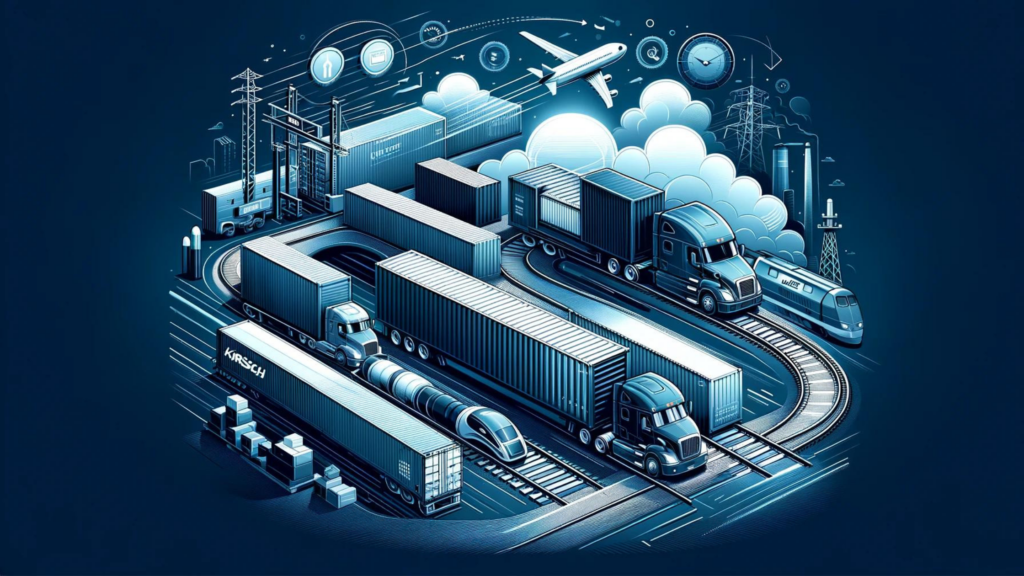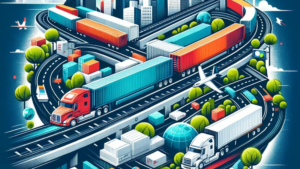In an era where efficiency and sustainability are paramount, intermodal service emerges as a vital cog in the logistics and supply chain machinery. Kirsch Transportation Services, Inc., with its established partnerships with Class I railroad providers, epitomizes the integration of seamless door-to-door intermodal services, offering a blend of cost-effectiveness and reliability. This article delves into the essence of intermodal transportation, its advantages, and why Kirsch Transportation’s approach stands out in the logistics domain.
Introduction to Intermodal Transportation
Intermodal transportation is not just a logistical strategy; it’s a synergistic approach to moving goods that marries the strengths of multiple transportation modes to optimize efficiency, cost, and environmental impact. Expected to surge by USD 50.45 million by 2026 at a CAGR of 6.38 percent, intermodal services are rapidly becoming the backbone of global trade and logistics operations.
Understanding Intermodal Transportation
At its core, intermodal transportation involves the use of two or more modes of freight, such as rail and truck, to transport goods from the shipper to the destination. The process typically unfolds in three pivotal steps—starting with road transport to rail movement, and culminating in final delivery by road. This multi-faceted process ensures flexibility, efficiency, and sustainability in the logistics chain.
The Distinctive Steps of Intermodal Transportation
- Transport by Road: Begins with a drayage carrier transporting an empty container from an origin rail ramp to the shipper, then back to the rail ramp once filled.
- Transport by Rail: The goods are then moved via railroad from the origin rail ramp to the destination rail ramp, leveraging the efficiency and environmental benefits of rail transport.
- Final Leg by Road: At the destination, another drayage carrier picks up the container for the final delivery to the receiver.
Comparing Truckload and Intermodal Transportation
Why opt for intermodal transport? The answer lies in its benefits:
- Fast Service: Intermodal allows for quicker product delivery by selecting the most efficient routes and facilitating easier transfers between modes.
- Lower Costs: Shippers enjoy lower, more consistent pricing, thanks to the cost-effectiveness of rail transport over long distances.
- Increased Capacity: Leveraging reverse logistics, companies can utilize large containers to their full capacity, achieving economies of scale.
- Enhanced Trackability: The containerized nature of intermodal freight ensures that goods are less prone to loss or damage, offering unparalleled trackability and security.
- Environmental Sustainability: Intermodal transportation significantly reduces carbon emissions and traffic congestion compared to overland truck transport, highlighting its role in sustainable logistics.
Pioneering Intermodal Service Excellence
Kirsch Transportation stands at the forefront of intermodal service, offering unparalleled expertise and a vast network of Class I railroad partnerships. By coordinating the pickup and delivery of 53′ dry domestic intermodal containers, Kirsch ensures seamless, door-to-door service for shippers, encapsulating the essence of efficient and environmentally responsible logistics solutions.
Embracing Intermodal with Kirsch Transportation
With its blend of cost-effectiveness, speed, and environmental benefits, Intermodal shipping represents a strategic advantage in the modern logistics landscape. However, navigating and optimizing intermodal transportation can be complex. Kirsch Transportation simplifies this process, providing shippers with customized, efficient, and sustainable shipping solutions. Connect with Kirsch Transportation to leverage the power of intermodal service and transform your logistics operations today.













